1. Overly Themed Decor Sets
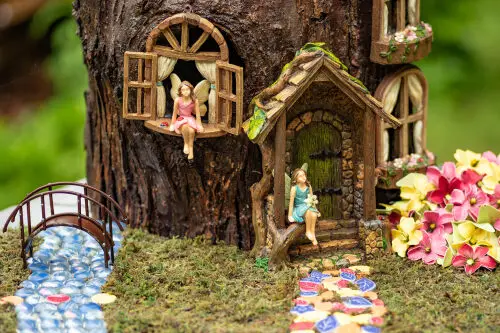
Matching sets like “tropical paradise” or “fairy garden” kits often look cute initially but rarely age well. They can make the garden feel staged or artificial. Buyers often prefer versatile pieces that can adapt over time. Overly themed sets can also limit personal style flexibility.
These sets may include low-quality components that wear out at different rates. Broken or faded pieces can make the entire display look neglected. Simple, high-quality items integrated thoughtfully usually appeal to a wider audience. Subtle decor allows buyers to imagine their own vision in the space.
2. Plastic Furniture That Looks Cheap
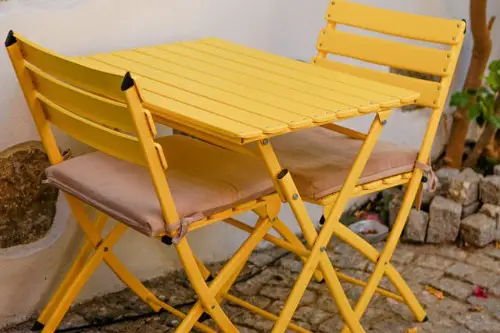
Plastic patio chairs and tables are lightweight and easy to move, but they rarely impress buyers. They can look flimsy and inexpensive, especially in comparison to wood, metal, or wicker options. The sheen of hard plastic often clashes with natural surroundings, making the outdoor space feel artificial. People often associate plastic furniture with rental properties or temporary setups rather than a well-curated garden.
Additionally, plastic can warp or discolor over time, which adds to the impression of low quality. Even if the set is structurally sound, its appearance can drag down the perceived value of the entire backyard. Buyers often want furniture that enhances their lifestyle, not just something functional. Investing in sturdier, visually appealing pieces usually leaves a better impression.
3. Outdated Solar Lights
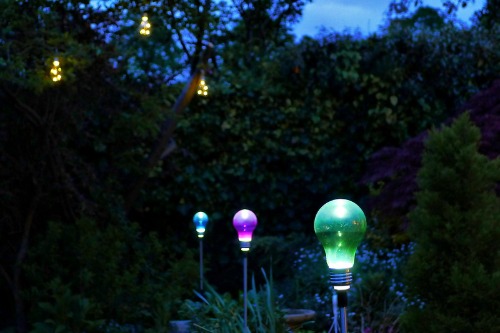
Solar lights are practical, but old-fashioned designs with flimsy stakes and pale yellow light can be a turnoff. Buyers might see them as cheap or ineffective. Many older models fail to charge properly or burn out quickly, creating frustration rather than ambiance. A garden with inconsistent lighting can feel neglected, which isn’t appealing to potential buyers.
The other issue is style. Lights with dated motifs—think plastic lanterns shaped like mushrooms or overly ornate lanterns—don’t mesh with modern garden aesthetics. Subtle, well-placed lighting is far more appealing. A few elegant, well-maintained lights can make a garden feel magical rather than cluttered.
4. Excessive Garden Gnomes
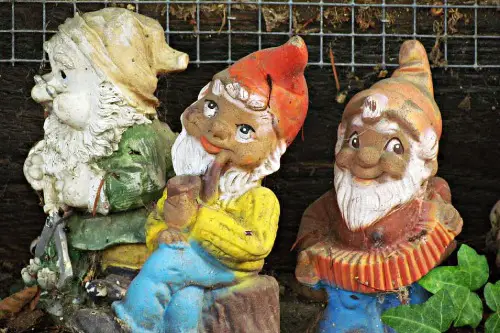
A single gnome can be charming, but a dozen scattered across the yard starts to feel overwhelming. It can give buyers the impression that the space is chaotic rather than curated. While whimsical touches are fun, too many create visual noise. The overabundance of gnomes can distract from landscaping and other garden features.
Moreover, gnomes rarely age gracefully. Sun exposure fades colors, and rain can chip paint, leaving a neglected look. Buyers tend to prefer neutral, adaptable accents they can work with. Keeping decorative figures minimal and intentional often increases appeal.
5. Fake Topiary Animals
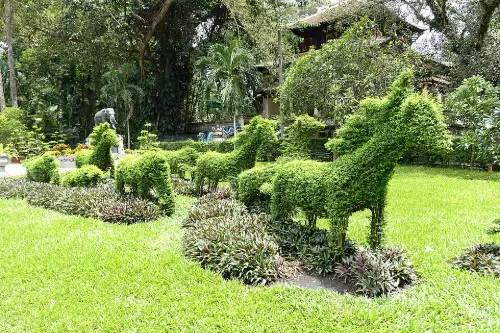
Artificial topiary shaped like animals—think green foam elephants or plastic lions—can quickly look tacky. Even if they’re technically “neat,” they often read as kitsch. Buyers may question the upkeep of real plants if fake ones are present. The fake appearance can disrupt the natural flow and authenticity of a garden.
These pieces also suggest a lack of commitment to real landscaping. Maintaining healthy plants requires effort, which buyers expect to see. Over-the-top faux animals might make the garden feel staged or less valuable. Simple, well-tended greenery usually wins over gimmicky decor.
6. Inflatable Garden Decor

Inflatable decorations are eye-catching for holidays but rarely appeal in regular garden settings. A large inflatable flamingo or unicorn can dominate a space, making it feel temporary. They often lose air or get damaged quickly, which diminishes their charm. Buyers tend to prefer elements that suggest permanence and investment in the outdoor space.
Additionally, inflatables can look cheap and awkward when not in use. They are also difficult to integrate with plants, paths, or patios. Long-term, they offer very little in terms of value. Solid, durable decor feels more intentional and luxurious.
7. Overly Bright Plastic Pots
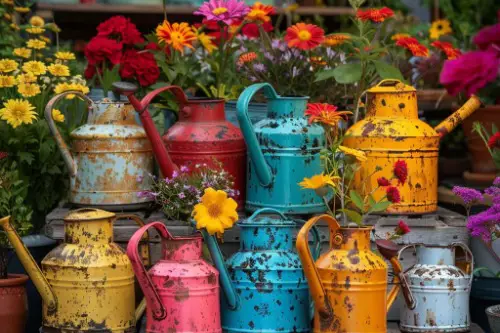
Plastic planters in neon or overly bright colors can clash with the natural tones of a garden. While they are lightweight and inexpensive, they often feel juvenile. Buyers usually prefer pots that blend into the garden rather than jump out aggressively. Bright plastics can create visual tension instead of harmony.
They also fade quickly under sun exposure. Once the vibrant color dulls, the pots can look worn and cheap. Buyers often perceive this as a sign that the garden has been haphazardly maintained. Neutral, ceramic, or muted pots are much safer for creating a cohesive outdoor look.
8. Motion-Activated Sprinklers in Decorative Areas
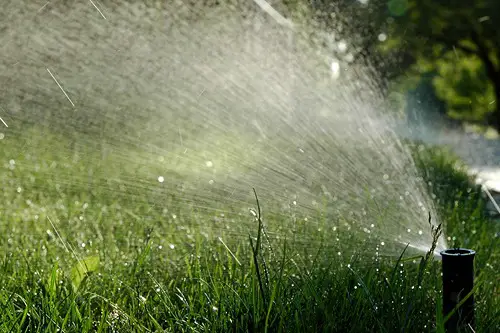
While practical for pest control, motion-activated sprinklers in prominent garden areas can be startling and off-putting. They often startle pets and people alike. Buyers may imagine the annoyance of constantly being sprayed or having plants disrupted. Even the cleverest design can’t disguise the potential nuisance factor.
Their presence can suggest maintenance headaches. Buyers tend to favor gardens that feel serene and easy to enjoy. If a practical solution interferes with the aesthetic, it might become a liability rather than an asset. Strategically placing them out of sight usually works better.
9. Plastic Fountains That Leak
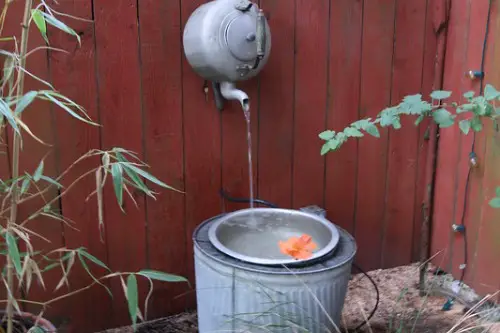
Fountains can be beautiful focal points, but cheap plastic versions often crack, leak, or look flimsy. A fountain that doesn’t function properly can make the garden feel neglected. Even when working, low-quality fountains rarely impress buyers. The sound of running water is only effective when the piece looks durable and elegant.
Additionally, maintenance issues are obvious to visitors. Plastic may warp in heat or freeze in winter, leading to constant repair worries. A stone or metal fountain is often seen as a safer investment. Buyers typically equate material quality with garden value.
10. Tacky Wind Spinners
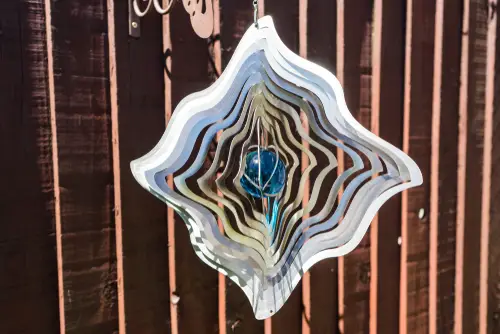
Wind spinners can be whimsical, but oversized or neon versions often feel dated. They can overwhelm the garden rather than complement it. Their motion draws constant attention, which can be visually tiring. Buyers generally prefer elements that enhance rather than dominate a space.
The risk of rust or fading is another drawback. Cheap metals and paints degrade quickly outdoors. A wind spinner that is falling apart detracts from overall appeal. Subtle kinetic sculptures are far more likely to impress than garish, spinning novelties.
11. Overcrowded Hanging Baskets
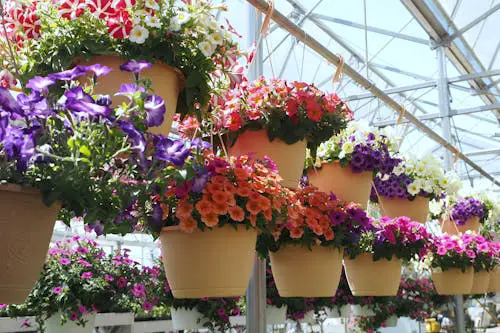
Hanging baskets can be lovely, but too many in a small area create visual chaos. When flowers spill over in every direction, the garden can look messy instead of lush. Buyers may feel the space requires constant upkeep. It’s easy for an overabundance of hanging baskets to overshadow other garden elements.
Crowding also reduces airflow and sunlight for plants. Overstuffed baskets can lead to dying flowers or disease. Buyers often look for gardens that are manageable and visually balanced. Strategic placement of a few well-tended baskets works far better than a wall of them.
12. Oversized Outdoor Clocks
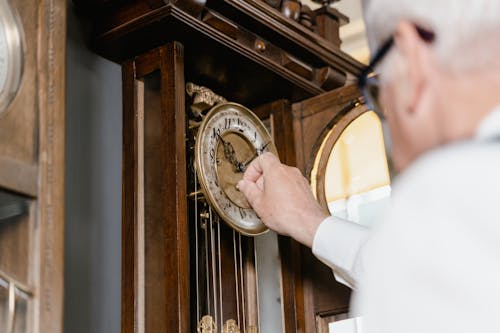
Large outdoor clocks might sound charming, but when they dominate a fence or wall, they can feel gimmicky. Their size can compete with other design elements rather than complement them. Buyers often prefer subtle decor that enhances ambiance instead of demanding attention. An oversized clock risks making the garden feel like a novelty space.
Weather exposure is another issue. Cheap outdoor clocks can rust, fade, or stop working quickly. A broken or weathered timepiece sends the wrong message about garden care. Small, tasteful clocks or other functional decor tend to be safer choices.
13. Garden Flags with Political or Pop-Culture Messages

While flags can be festive, ones featuring political slogans or pop-culture references may alienate buyers. They can give an impression that the garden is not neutral or inclusive. Buyers usually look for spaces that feel inviting to anyone. Personalized messaging can overshadow landscaping and curb appeal.
Flags also fade quickly and may appear worn. Tattered or dated designs reduce perceived garden quality. Neutral, seasonal, or floral flags are generally a safer option. Buyers tend to respond to decor that enhances the space rather than making statements.
14. Overly Gimmicky Statues
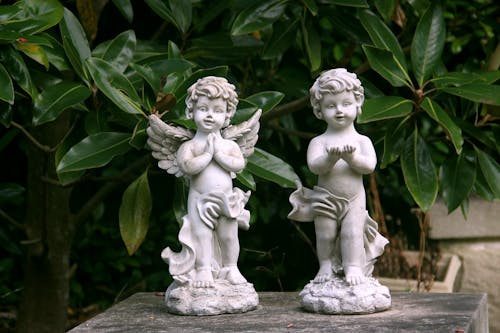
Garden statues can add charm, but when they’re cartoonish or kitschy, they often scream “trying too hard.” Think giant gnomes riding flamingos or neon-colored fairies—they can feel more like a theme park than a backyard retreat. Buyers usually prefer pieces that complement the natural environment instead of dominating it. Over-the-top statues can make a garden feel cluttered and disjointed rather than inviting.
These statues also tend to date quickly. What feels fun now might look ridiculous in a few years, turning off buyers who want a timeless outdoor space. Durability can also be an issue; cheap resin figures often fade or crack in the sun. A simple, tasteful sculpture usually has a longer lifespan and wider appeal.
This post 14 Garden Decor Pieces That Turn Buyers Off was first published on Greenhouse Black.
